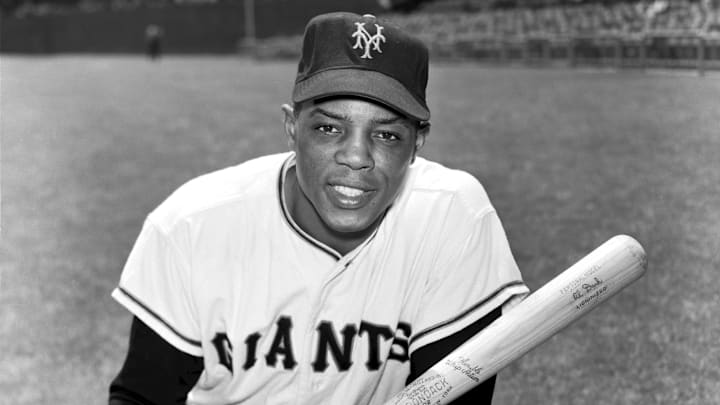The 1954 season for Willie Mays is arguably his most epic. After returning from military service, the SF Giants icon proceeded to slash .345/.411/.667 and added 41 homers en route to his first NL MVP Award. His prowess led the Giants back to the World Series, a place they’d been absent during his time in the US Army.
After a historic 1954 campaign, SF Giants legend Willie Mays won another title
In the late innings of Game 1, Mays produced the most iconic defensive play of his career, traveling over ninety feet to make “The Catch” and preserving the game’s 2-2 tie. The Giants would go on to capture that World Series title, their first in twenty years. Mays was crowned the World Series MVP that year. The list of accomplishments were more than long enough for a relishable offseason, but there’d be no time off for Mays.
Following his stellar ’54 season, Mays headed south to join the Santurce Cangrejeros (Crabbers) in the Puerto Rican Winter League. He’d be sharing an outfield with Negro League slugger Bob Thurman and a teenage phenom by the name of Roberto Clemente. Mays became the first Cangrejero ever to bat for the cycle and would lead the league with a .395 batting average.
Following their national title, Santurce headed to the Caribbean Series tournament. It's here when Mays clobbers a Game 6, two-run walkoff bomb coming in the 11th inning with two outs. The Crabbers would dominate and capture the 1955 Caribbean Series title, just four months after the Giants World Series sweep of Cleveland. There's no doubt Mays brought an extra spark to a Puerto Rican club that was loaded with talent.
Five of the nine tournament All-Stars belonged to the Cangrejeros and a 24-year-old Don Zimmer was awarded tournament MVP. Even the club’s batboy was destined for the Hall of Fame and would join Mays’ Giants following their move out to San Francisco; a baby bull known also asOrlando Cepeda.
The SF Giants' connections to Santurce run deep and even include recent boppers like Heliot Ramos and Pablo Sandoval, but none that'll ever quite compete with the flare Mays brought to that 1955 winter. For Mays, it was an incredible stretch of play that extended beyond the regular season and playoffs.
